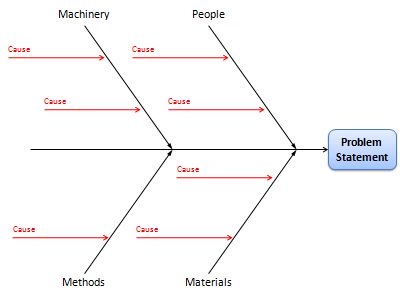Solving complex problems may be difficult but it doesn't have to be excruciating. You just need the right frame of mind and a process for untangling the problem at hand.
Luckily for you, there are plenty of techniques available to solve whatever problems come at you in the workplace.
When faced with a doozy of a problem, where do you start? And what problem-solving techniques can you use right now that can help you make good decisions?
Today's post will give you tips and techniques for solving complex problems so you can untangle any complication like an expert.
How many steps are there in problem-solving?
At its core, problem-solving is a methodical four-step process. You may even recall these steps from when you were first introduced to the Scientific Method.
- First, you must define the problem. What is its cause? What are the signs there's a problem at all?
- Next, you identify various options for solutions. What are some good ideas to solve this?
- Then, evaluate your options and choose from among them. What is the best option to solve the problem? What's the easiest option? How should you prioritize?
- Finally, implement the chosen solution. Does it solve the problem? Is there another option you need to try?
When applying problem-solving techniques, you will be using a variation of these steps as your foundation.
Takeaway: Before you can solve a problem, seek to understand it fully.
Creative problem-solving techniques
Time to get creative! You might think this will just be a list of out-of-the-box ways to brainstorm ideas. Not exactly.
Creative problem solving (CPS) is actually a formal process formulated by Sidney Parnes and Alex Faickney Osborn, who is thought of as the father of traditional brainstorming (and the "O" in famous advertising agency BBDO).
Their creative problem solving process emphasizes several things, namely:
- Separate ideation from evaluation. When you brainstorm creative ideas, have a separate time for writing it all down. Focus on generating lots of ideas. Don't prioritize or evaluate them until everything is captured.
- Judging will shut it down. Nothing stops the flow of creative ideas faster than judging them on the spot. Wait until the brainstorming is over before you evaluate.
- Restate problems as questions. It's easier to entice a group into thinking of creative ideas when challenges are stated as open-ended questions.
- Use "Yes and" to expand ideas. Here's one of the basic tenets of improv comedy. It's way too easy to shut down and negate ideas by using the word "but" (i.e. "But I think this is better..."). Avoid this at all costs. Instead, expand on what was previously introduced by saying "Yes, and..." to keep ideas flowing and evolving.
Takeaway: When brainstorming solutions, generate ideas first by using questions and building off of existing ideas. Do all evaluating and judging later.
Problem-solving tips from psychology
If you take a look at the history of problem-solving techniques in psychology, you'll come across a wide spectrum of interesting ideas that could be helpful.
Take it from experience
In 1911, the American psychologist Edward Thorndike observed cats figuring out how to escape from the cage he placed them in. From this, Thorndike developed his law of effect, which states: If you succeed via trial-and-error, you're more likely to use those same actions and ideas that led to your previous success when you face the problem again.
Takeaway: Your past experience can inform and shed light on the problem you face now. Recall. Explore.
Barriers to reproductive thinking
The Gestalt psychologists built on Thorndike's ideas when they proposed that problem-solving can happen via reproductive thinking — which is not about sex, but rather solving a problem by using past experience and reproducing that experience to solve the current problem.
What's interesting about Gestalt psychology is how they view barriers to problem-solving. Here are two such barriers:
- Are you entrenched? Look up mental set or entrenchment. This is when you're fixated on a solution that used to work well in the past but has no bearing to your current problem. Are you so entrenched with a method or idea that you use it even when it doesn't work? As Queen Elsa sang, "Let it go!"
- Are you thinking of alternative uses? There is a cognitive bias called functional fixedness which could thwart any of your critical thinking techniques by having you only see an object's conventional function. For example, say you need to cut a piece of paper in half but only have a ruler. Functional fixedness would lead you to think the ruler is only good for measuring things. (You could also use the ruler to crease the paper, making it easier to tear it in half.)
Takeaway: Think outside of the box! And by box, we mean outside of the past experience you're holding on to, or outside any preconceived ideas on how a tool is conventionally used.
More problem-solving tools
Hurson's Productive Thinking Model
In his book "Think Better," author and creativity guru Tim Hurson proposed a six-step model for solving problems creatively. The steps in his Productive Thinking Model are:
- Ask, "What is going on?" Define the problem and its impact on your company, then clarify your vision for the future.
- Ask, "What is success?" Define what the solution must do, what resources it needs, its scope, and the values it must uphold.
- Ask, "What is the question?" Generate a long list of questions that, when answered, will solve the problem.
- Generate answers. Answer the questions from step three.
- Forge the solution. Evaluate the ideas with potential based on the criteria from step two. Pick a solution.
- Align resources. Identify people and resources to execute the solution.
Use a fishbone diagram to see cause and effect
The most important part of defining the problem is looking at the possible root cause. You'll need to ask yourself questions like: Where and when is it happening? How is it occurring? With whom is it happening? Why is it happening?
You can get to the root cause with a fishbone diagram (also known as an Ishikawa diagram or a cause and effect diagram).
Basically, you put the effect on the right side as the problem statement. Then you list all possible causes on the left, grouped into larger cause categories. The resulting shape resembles a fish skeleton. Which is a perfect way to say, "This problem smells fishy."

Use analogies to get to a solution
Analogical thinking uses information from one area to help with a problem in a different area. In short, solving a different problem can lead you to find a solution to the actual problem. Watch out though! Analogies are difficult for beginners and take some getting used to.
An example: In the "radiation problem," a doctor has a patient with a tumor that cannot be operated on. The doctor can use rays to destroy the tumor but it also destroys healthy tissue.
Two researchers, Gick and Holyoak, noted that people solved the radiation problem much more easily after being asked to read a story about an invading general who must capture the fortress of a king but be careful to avoid landmines that will detonate if large forces traverse the streets. The general then sends small forces of men down different streets so the army can converge at the fortress at the same time and can capture it at full force.
Ask "12 what elses"
In her book "The Architecture of All Abundance," author Lenedra J. Carroll (aka the mother of pop star Jewel) talks about a question-and-answer technique for getting out of a problem.
When faced with a problem, ask yourself a question about it and brainstorm 12 answers ("12 what elses") to that problem. Then you can go further by taking one answer, turning it into a question and generating 12 more "what elses." Repeat until the solution is golden brown, fully baked, and ready to take out of the oven.

Start using these techniques today
Hopefully you find these different techniques useful and they get your imagination rolling with ideas on how to solve different problems.
And if that's the case, then you have four different takeaways to use the next time a problem gets you tangled up:
- Don't start by trying to solve the problem. First, aim to understand the root of the problem.
- Use questions to generate ideas for solving the problem.
- Look to previous problems to find the answers to new ones.
- Clear your preconceived ideas and past experiences before attempting to tackle the problem.
How to solve problems with Wrike
Empower your team to be even more productive with Wrike's project management and collaboration tools. With documents, revisions, and project-related communication all in one place, employees can use Wrike as a single source of truth for all project information.
Get 360-degree visibility of all your work and identify problems before they occur — see schedule or resource conflicts on Gantt charts, easily view progress with custom statuses, and move work along with automated approvals.
Want to streamline your processes and ease future problem-solving? Get started with a free two-week trial of Wrike today.
What are your favorite problem-solving techniques?
Do you have a problem-solving technique that has worked wonders for your organization? Hit the comments below and share your wisdom!



